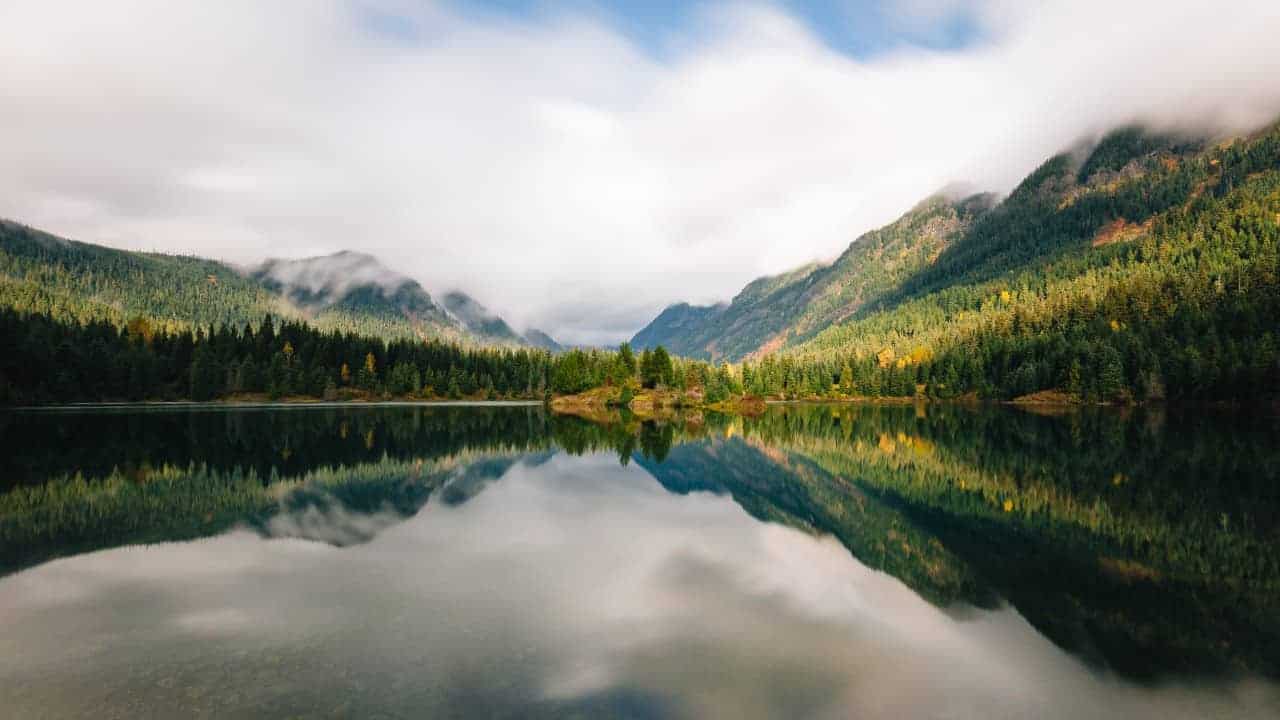Featuring a spectacular diversity of natural areas, Washington State is undoubtedly one of the country’s best destinations for dispersed camping.
Whether you’re looking to pitch your tent at Sulivan Lake, deep in the Olympic National Forest, or in the Cascades, this U.S. state provides numerous free camping opportunities.
To help you find an ideal camping spot and navigate the state’s various rules and regulations, I’ve created this detailed and easy-to-read Washington dispersed camping guide.
Map of Dispersed Camping Spots in Washington
You can easily find the locations of the best dispersed campgrounds in the state using this map.
Where in Washington is Dispersed Camping Allowed?
When planning a camping trip in this U.S. state, the first and most crucial step is understanding where dispersed camping is allowed.
In Washington State, four primary state and federal agencies permit wild camping on the land they manage. These are the Bureau of Land Management (BLM), U.S. Forest Service (USFS), U.S. Army Corps of Engineers (USACE), and Washington Department of Natural Resources (WADNR).
BLM Dispersed Camping in Washington
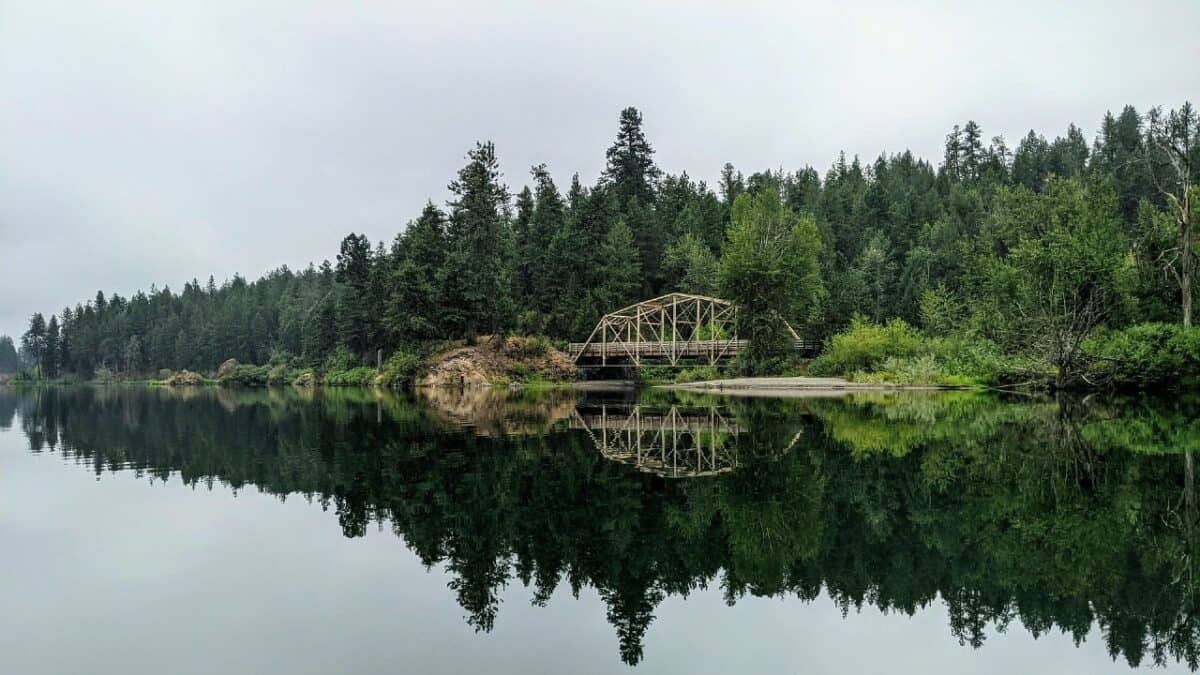
One of Washington’s most prominent public landowners that allow dispersed camping is the Bureau of Land Management.
The land managed by this agency is primarily located in the state’s eastern half, in the backcountry near Spokane, and the Columbia Basin.
The Bureau of Land Management District Office for Washington can be found in the city of Spokane, near the state’s border with Idaho.
On BLM land in Washington, dispersed camping is generally allowed. However, I would highly recommend contacting the District Office to check for the specific regulations.
Here’s a comprehensive overview of the dispersed camping rules imposed by the Bureau of Land Management.
USFS Dispersed Camping in Washington
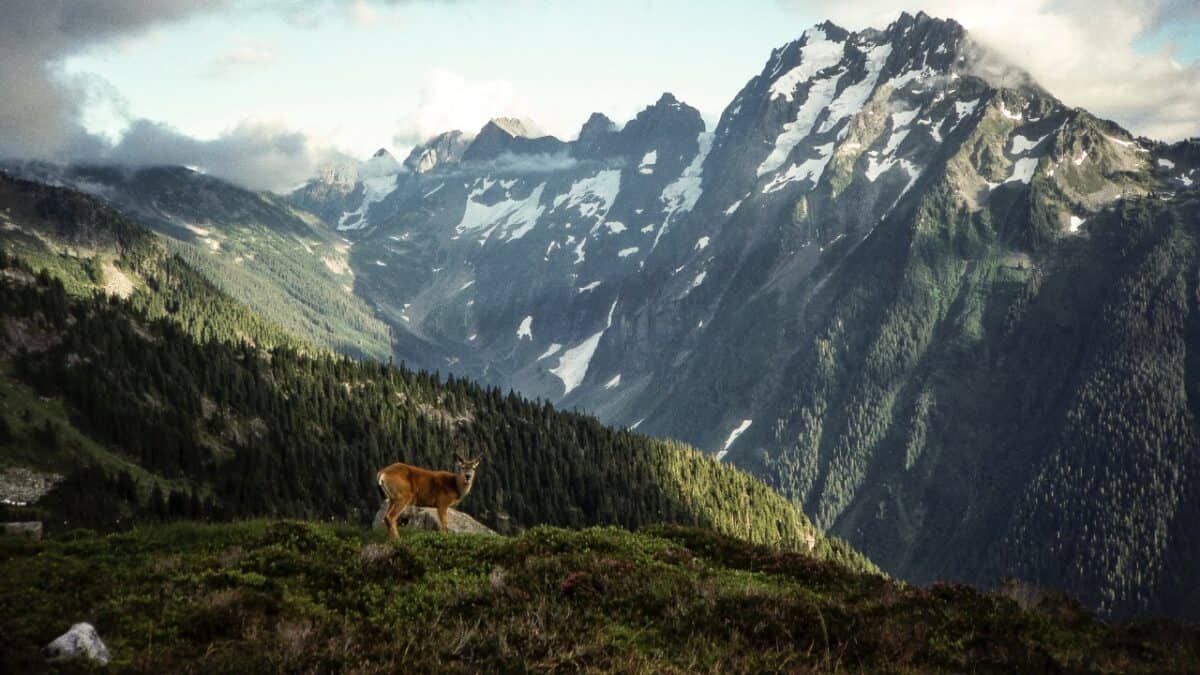
The U.S. Forest Service manages vast swathes of land in this state. As you can already guess, these are primarily wooded areas – 7 distinct National Forests, to be more precise.
Since most of Washington’s wild camping zones are within these wooded areas, you’ll want to get familiar with the regulations and rules for each forest.
Here’s a list of Washington’s 7 National Forests that the USFS manages, together with links to each area’s wild camping guidelines:
- Umatilla National Forest
- Olympic National Forest
- Okanogan – Wenatchee National Forest
- Mount Baker – Snoqualmie National Forest
- Kaniksu National Forest
- Gifford Pinchot National Forest
- Colville National Forest
USACE Dispersed Camping in Washington
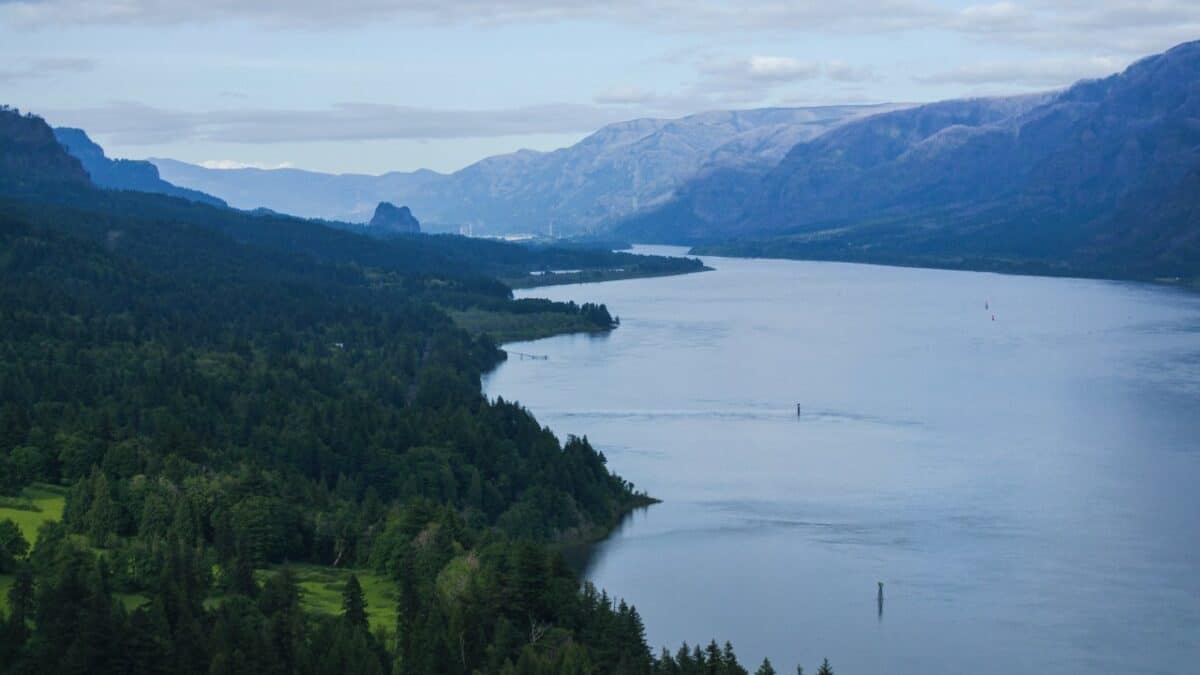
One not-so-well-known agency that also allows dispersed camping on its land in Washington is the United States Army Corps of Engineers.
Its camping zones can be found around the Columbia River valley and are pretty simple. They are mostly just parking lots situated next to boat ramps.
The best thing about these particular dispersed camping areas is that they often have access to basic amenities such as vault toilets.
Here’s a list of all campgrounds in Washington that the USACE manages.
WADNR Dispersed Camping in Washington
The Department of Natural Resources for Washington is another agency that allows dispersed campers to pitch tents or park RVs on its land.
The land that the WADNR manages operates on a first-come, first-served basis. In other words, those who get to these places first often get the best spots. There are about 80 such campgrounds in the state of Washington.
An important thing to mention about these WADNR-managed areas is that camping in them is not free – you’ll need to get the so-called “Discover Pass” first.
This permit costs only $35 and will allow you to camp in these zones for one year. This annual permit can be of great value to all those planning to take several trips to WADNR-managed dispersed camping areas.
How Do I Find Dispersed Camping Areas in Washington?
Finding wild camping zones in America’s northwesternmost state is relatively straightforward – all you need is a bit of experience navigating dirt roads and knowing where to look.
If you’re a complete wild camping beginner, on the other hand, you’ll be pleased to hear that some apps and websites provide user reviews and recommendations for wild camping.
These are the three best ones:
- Campendium – An app and website with numerous user reviews for pretty much all campgrounds and campsites across the country.
- The Dyrt – An app that makes finding dispersed and free campsites as easy as it gets thanks to its filtering feature.
- Freecampsites.net – My go-to website for discovering dispersed camping areas.
These websites and apps are a great starting place for discovering magnificent camping areas – there’s no doubt about that. However, I would still highly recommend giving a call to a Bureau of Land Management or Ranger District office situated in the region you’re planning to camp in.
That’s because these offices generally provide campers and hikers with the most up-to-date information about outdoor activities. Moreover, they can also recommend camping locations based on your interests. If you are interested in camping in other US states, check out our guide to dispersed camping in New Mexico and our guide to dispersed camping in Wyoming.
Washington Dispersed Camping USFS Motor Vehicle Use Maps
One thing I would highly recommend you to do before heading over to one of Washington’s dispersed camping areas is to get yourself familiar with the MVUMs (Motor Vehicle Use Maps) provided by the U.S. Forest Service.
These convenient maps show the exact forest service roads along which it is allowed to engage in wild camping. Here are the links to them:
- Umatilla National Forest MVUM
- Olympic National Forest MVUM
- Okanogan – Wenatchee National Forest MVUM
- Mount Baker – Snoqualmie National Forest MVUM
- Kaniksu National Forest MVUM
- Gifford Pinchot National Forest MVUM
- Colville National Forest MVUM
Another great resource is this convenient guide to MVUMs in Washington and Oregon National Forests.
When searching for dispersed campsites, I often have Google Maps satellite view opened in one tab and the relevant MVUM in another – I would advise you to do the same. Doing so will allow you to cross-reference the two maps and easily find a great camping spot.
Dispersed Camping Regulations & Rules
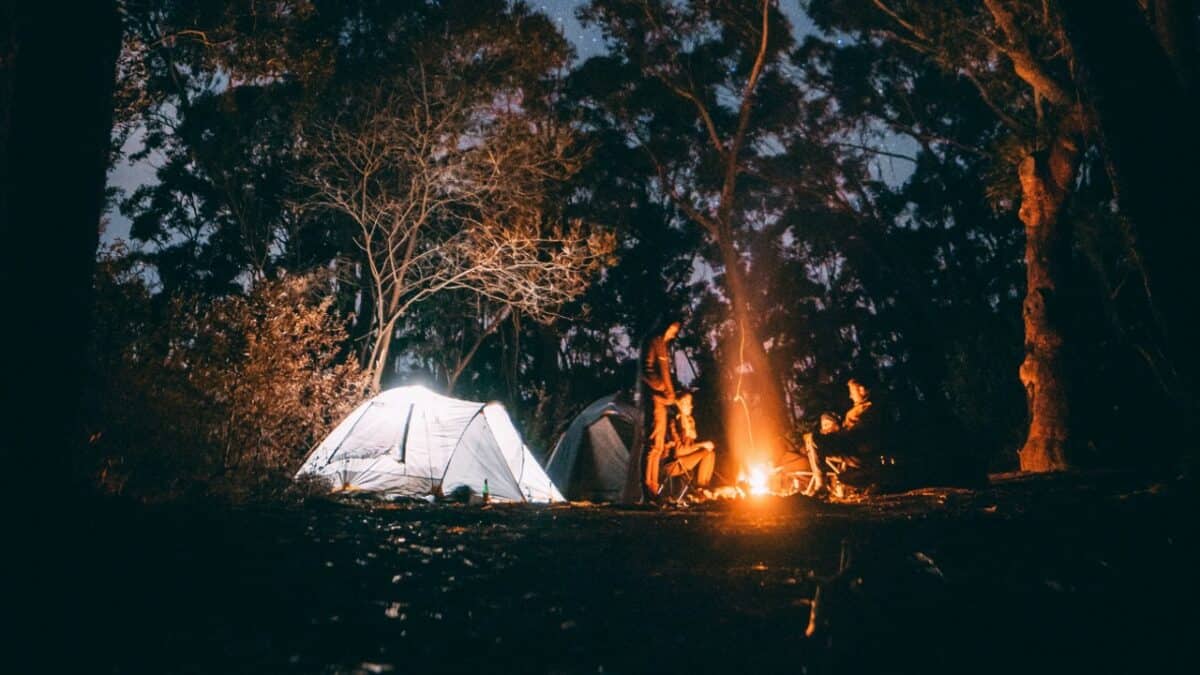
One of the best things about this kind of camping in the northwesternmost U.S. state is the lack of reservations, permits, and similar requirements that folks often need to obtain/book at established campsites.
You will still need to follow some rules whenever engaging in wild camping – be it in Washington or anywhere else. The best course of action is to always check with the relevant BLM or USFS office for the current regulations.
Always adhere to the “Leave No Trace” principle.
Here are some essential dispersed camping rules, as outlined by the United States Forest Service:
- Do not build a campfire if it’s not allowed. If it is, ensure the campfire is fully extinguished before leaving the camping spot.
- In general, wild camping is limited to two weeks within a month.
- Always pitch your tent at least 200 feet away from the nearest water source.
- Try to pick a camping spot where there’s no vegetation. The last thing you want is to damage the region’s unique plants.
- When available, use already-existing camping spots and fire rings.
- Never camp in areas close to established campgrounds, picnic areas, or trailheads. Keep the noise down, and don’t disturb other campers if there are any nearby.
- Always try to keep your campsite as small as possible. The bigger the camp is, the more potential it has to affect the environment negatively.
The Importance of “Leave No Trace” Principles
Following the “Leave No Trace” principles is undoubtedly one of the most critical considerations when engaging in wild or dispersed camping.
As its name suggests, the idea behind this “philosophy” is always to minimize one’s environmental impact and, in that way, allow future outdoor enthusiasts to enjoy the same camping spot.
The “Leave No Trace” principles are as follows:
- Be Considerate of Other Campers – Never leave your camping spot in worse condition than you found it. Also, don’t make too much noise and always pack your garbage.
- Be Respectful to Wildlife – Always be aware of the region’s wild animals. Properly store your provisions at all times.
- Minimize Campfire Impacts – As I mentioned above, never make a campfire unless you are sure making one is allowed. Do not create new fire rings.
- Leave What You Find – Apart from unforgettable memories, the only thing you should take away from the camping spot is your trash – nothing else.
- Properly Dispose of Waste – Bury human waste far away from water sources and pack all your garbage and food leftovers. If you can, bring a small, portable toilet.
- Only Camp on Durable Surfaces – Always be aware of your group’s potential to disturb fragile soil and vegetation.
- Prepare & Plan Ahead – Come up with a general idea of where you’d like to pitch your tent. Once you do that, ensure that dispersed camping in that area is allowed by researching online and contacting relevant field offices.
The Best Dispersed Camping Areas in Washington
The following is a list of Washington’s best areas where outdoor enthusiasts can pitch their tents and enjoy all the good stuff that comes with dispersed camping – unforgettable sights, smells, and sounds.
Mountain Loop Highway (Mount Baker – Snoqualmie National Forest)
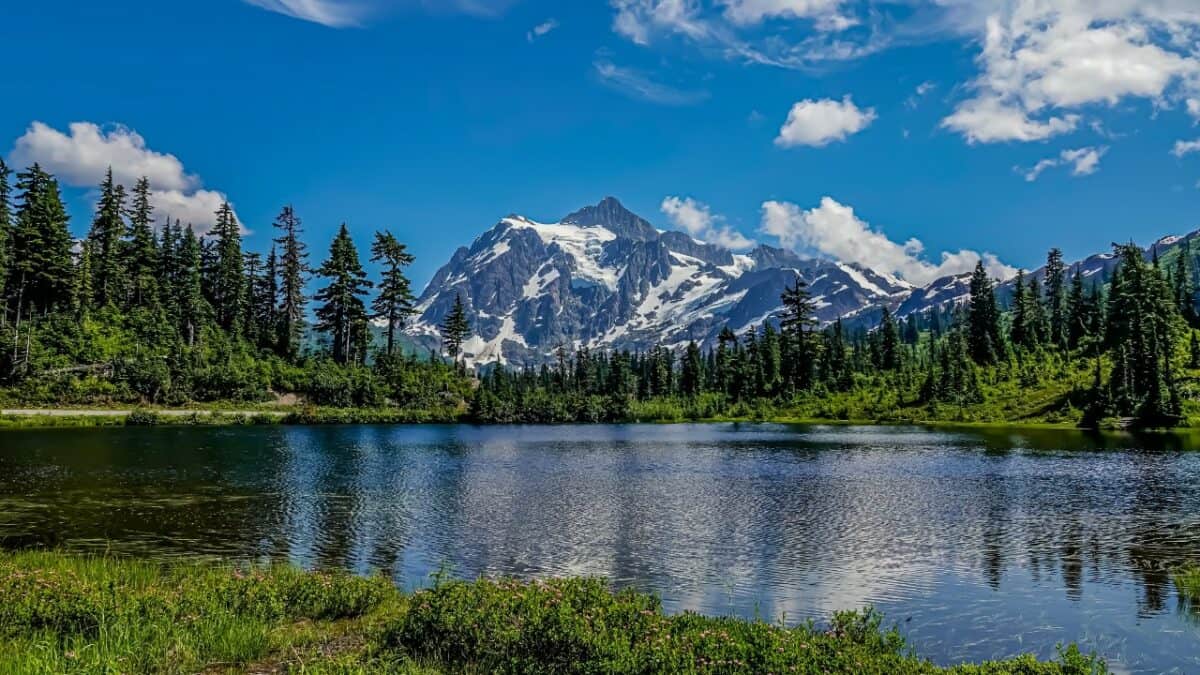
- Map
- Crowds: Moderate
- Water: No, but you can get some from the river
- Restrooms: No
Situated in the Mount Baker – Snoqualmie National Forest, the Mountain Loop Highway is a windy road along which outdoor enthusiasts can find some of the state’s best dispersed camping spots.
Although most of these spots are only road pull-offs, some are deeper in the National Forest, and some have excellent South Fork Sauk River access.
In addition to these dispersed sites, the area also features several established campgrounds. These are also situated along the Mountain Loop Highway, which connects Darrington with Granite Falls.
On the loop’s eastern end, you’ll find the best tent-pitching spots in the area that’s the furthest away from Darrington. And while these aren’t precisely peaceful – they’re pretty close to the highway – they provide campers with stunning views.
This region is quite popular with wild campers, so getting there early is essential to secure a good spot.
Forest Service Road 29 (Olympic Peninsula)
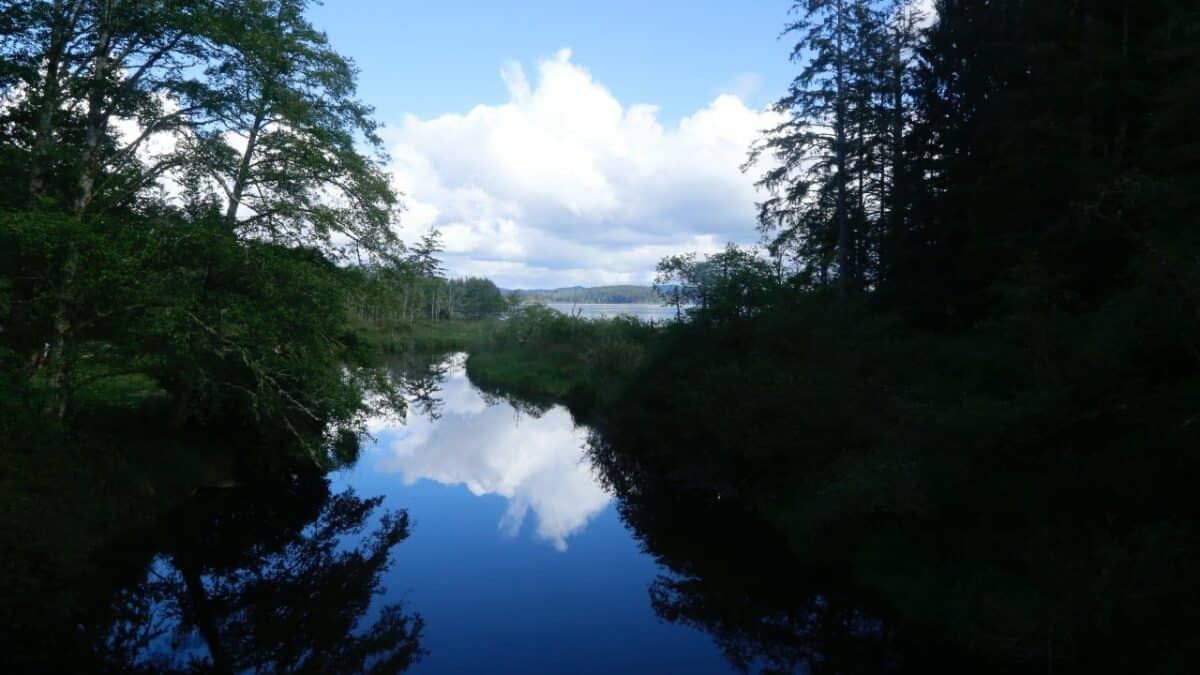
- Map
- Crowds: Busy
- Water: No
- Restrooms: No
Situated in the northwestern section of the Olympic National Forest, Forest Service Road 29 is the most popular dispersed camping area in this region.
The best thing about this road is that it features many spacious pull-offs. Many of these easily accommodate big vehicles, i.e. larger cars and RVs.
The area that I’ve linked on the map above is an excellent first option. It is the largest of all camping areas in the region and, therefore, the most popular. If it’s too crowded when you get there, keep driving, and you’ll eventually find places where you can pull off.
The Olympic Discovery Trail is quite close to this Forest Service Road. It’s a dog-friendly trail that follows the course of the Sol Duc River and is open to hikers and mountain bikers.
Besides Forest Service Road 29, the Olympic National Forest has many dispersed camping options. But, as I said above, this one is the best – you’ll just have to put in a bit of effort to find a peaceful camping spot.
Sullivan Creek Dispersed Sites (Colville National Forest)
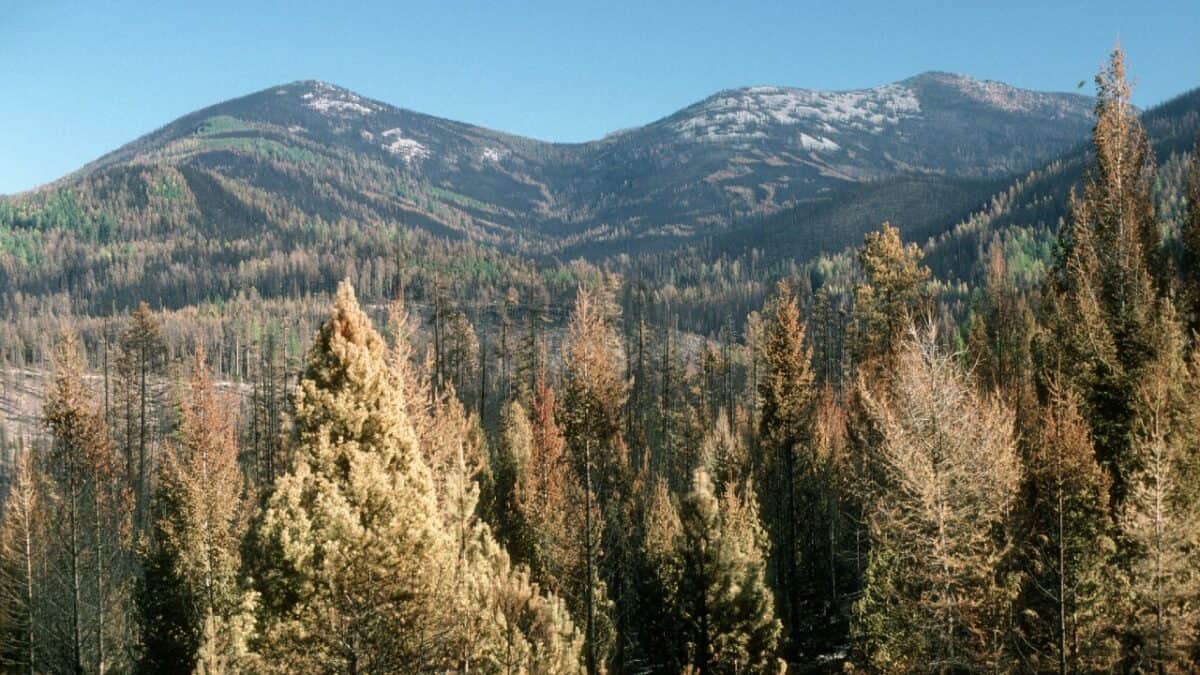
- Map
- Crowds: Moderate
- Water: No
- Restrooms: Vault toilets
The next Washington dispersed camping area can be found in the scenic Colville National Forest, which itself is located in the far northeast of the state. It’s a collection of campgrounds known as the Sullivan Creek Dispersed Sites.
While it’s true that these sites don’t offer a genuine wild camping experience, they are entirely free of charge and provide quite a bit of privacy to outdoor enthusiasts. Moreover, Sullivan Creek Dispersed Campsites also feature basic facilities, such as fire rings and vault toilets.
As their name suggests, the campsites are situated along Sullivan Creek Road. However, they’re not grouped together but rather separated into several clusters.
Those interested in day hikes will be pleased to know that there are many excellent hiking trails in this region. Boating on the nearby Sullivan Lake, which is nestled in the mountains and offers breathtaking views, is another recreational opportunity.
While not as popular as dispersed camping areas in the Olympic Peninsula, Sullivan Creek Dispersed Sites can still get quite crowded. Make sure to arrive as early as possible if you plan to spend a summer weekend there.
Tinkham Road (Mount Baker – Snoqualmie National Forest)
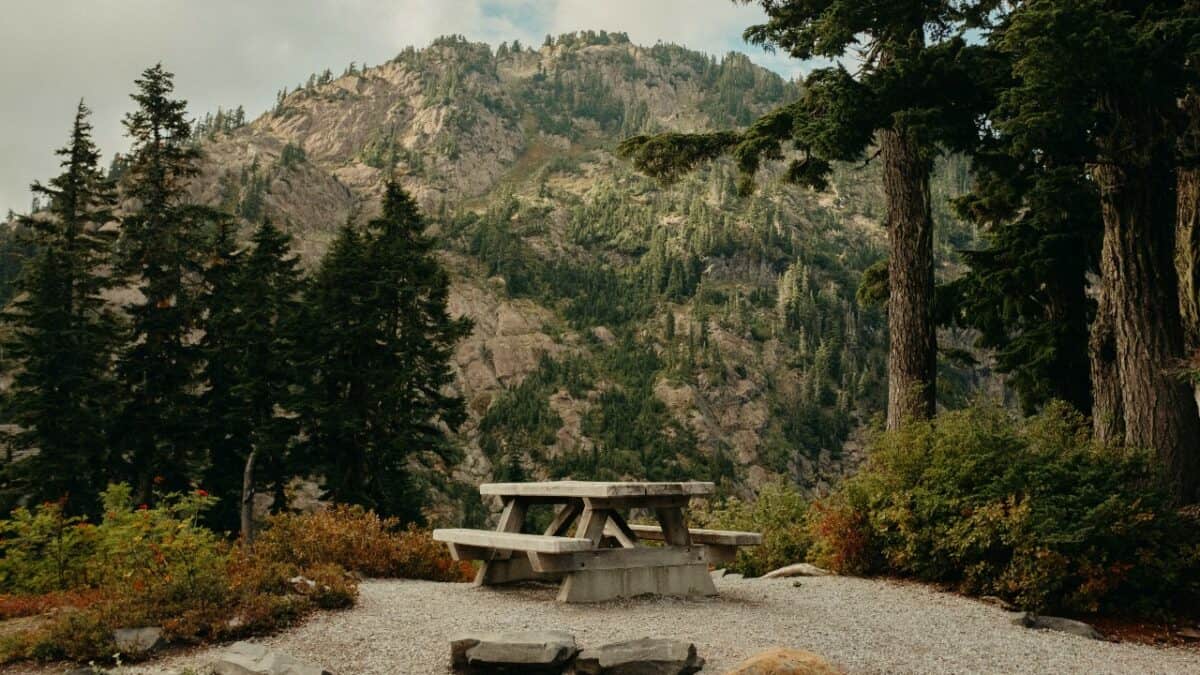
- Map
- Crowds: Moderate
- Water: No
- Restrooms: No
Like the Mountain Loop Highway described above, Tinkham Road is also located in Mount Baker – Snoqualmie National Forest and can be easily accessed from Seattle.
Besides the dispersed campsites located next to this road, there are also some additional ones just east of it, north of Lake Cle Elum. One can also find several established campgrounds in this region.
I highly recommend contacting the District Office for this National Forest before coming here. This is because some of the easiest pull-offs on Thinkam Road are now closed, so it’s best to get the most up-to-date information before heading to this area.
You will also have to be very careful while driving down Thinkam Road – it is notorious for its deep potholes. Take it slowly! If you own a large rig, you should consider camping at other places listed in this article, as you’ll probably have difficulty navigating here.
This road can get quite crowded during the summer due to its proximity to Seattle. You’ll have to get there early to get a good spot. Also, don’t forget to pack out all of your garbage.
Forest Service Road 52 (Mount Rainier Area)
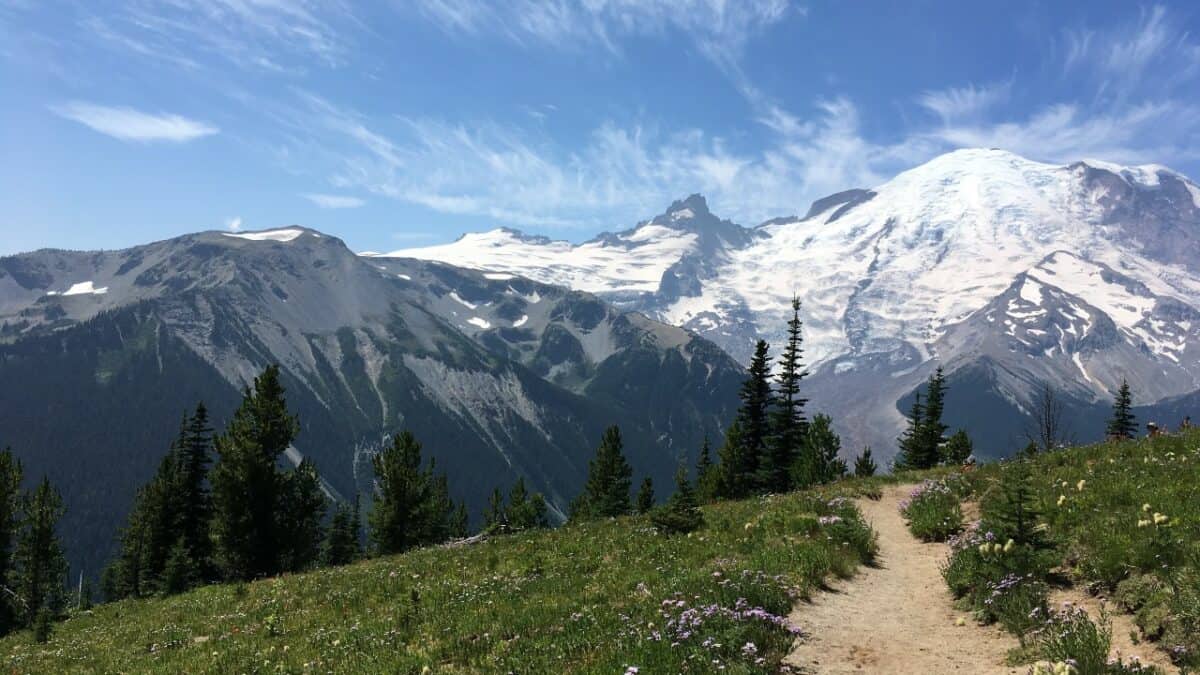
- Map
- Crowds: Busy
- Water: No
- Restrooms: No
The dispersed camping area situated along Forest Service Road 52, is undoubtedly among the most breathtaking in the entire state of Washington and one of the best dispersed camping areas near Mount Rainier.
It is located right next to the charming Nisqually River, just southwest of the Mount Rainier National Park. The Forest Service Road 52 parallels the Nisqually River and has excellent camping spots along its entire length. Stunning views of Washington’s highest mountain are guaranteed.
Another thing that turns FR52 into an excellent overnight option is its proximity to the park’s entrance. In other words, you’ll be able to take gaze upon astonishing waterfalls and stroll through a temperate inland rainforest pretty much whenever you want.
This area can get quite crowdy, though. Those planning to camp along Forest Service Road 52 in the summer should get there early to secure a good spot.
Another thing worth pointing out is that this road has no facilities or amenities. Therefore, make sure to come here fully prepared and bring everything you need for a safe and enjoyable camping experience.
Forest Service Road 23 (Gifford-Pinchot National Forest)
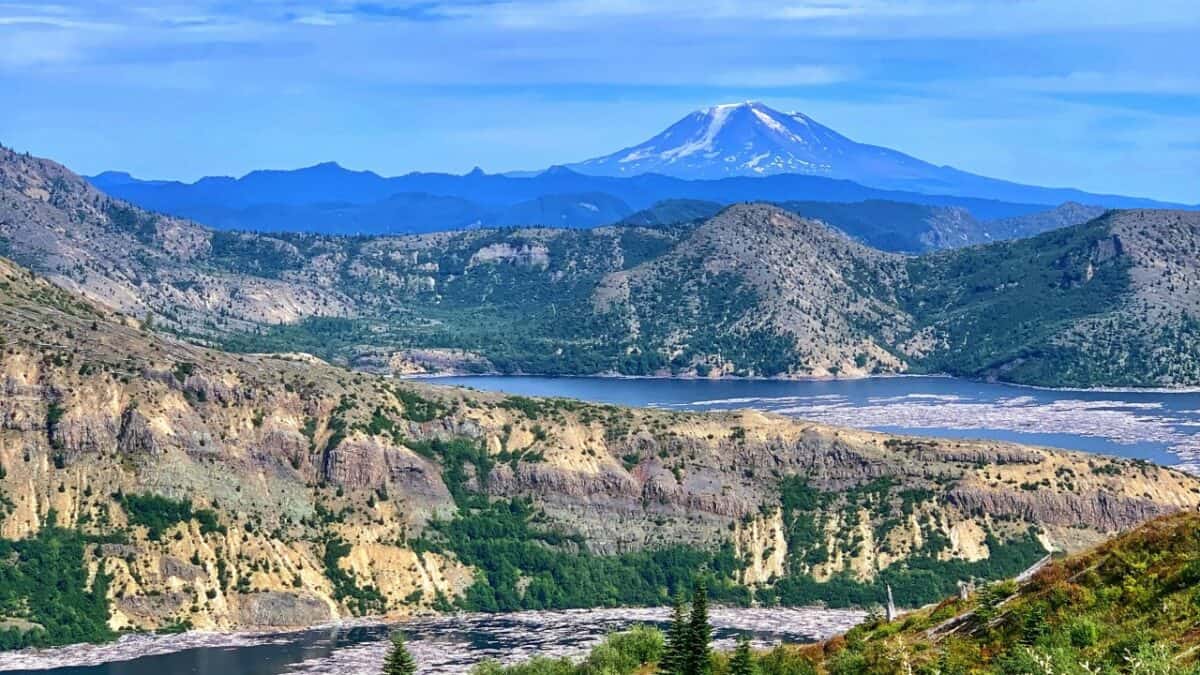
- Map
- Crowds: Moderate
- Water: No, but you can get some from the creeks
- Restrooms: No
The Forest Service Road 23 Dispersed Camping Area can be found on the flanks of Mount Adams in the Gifford-Pinchot National Forest. The road passes next to several great established campgrounds at Council Lake, leading up to Babyshoe Pass.
You are, however, looking for dispersed sites, and you’ll be able to find a plethora of them everywhere along the road. These are simple road pull-offs, most of which can be found south of the pass.
This is a moderately-crowded dispersed camping area, so don’t expect much privacy. On the bright side, you will have excellent access to Mount Adams and some amazing backpacking trails, the best being the Williams Mine Trail.
The Gifford-Pinchot National Forest is an excellent destination for all those seeking scenic beauty and creative inspiration. Many consider it the finest of all National Forests in Washington, as it features volcanic peaks, glaciers, high-mountain meadows, and old-growth woodlands.
There are no facilities or amenities in this dispersed camping area. Fortunately, campers can pull water from nearby creeks and filter it. Even so, I would highly recommend packing and bringing clean water.
Caliche Lake
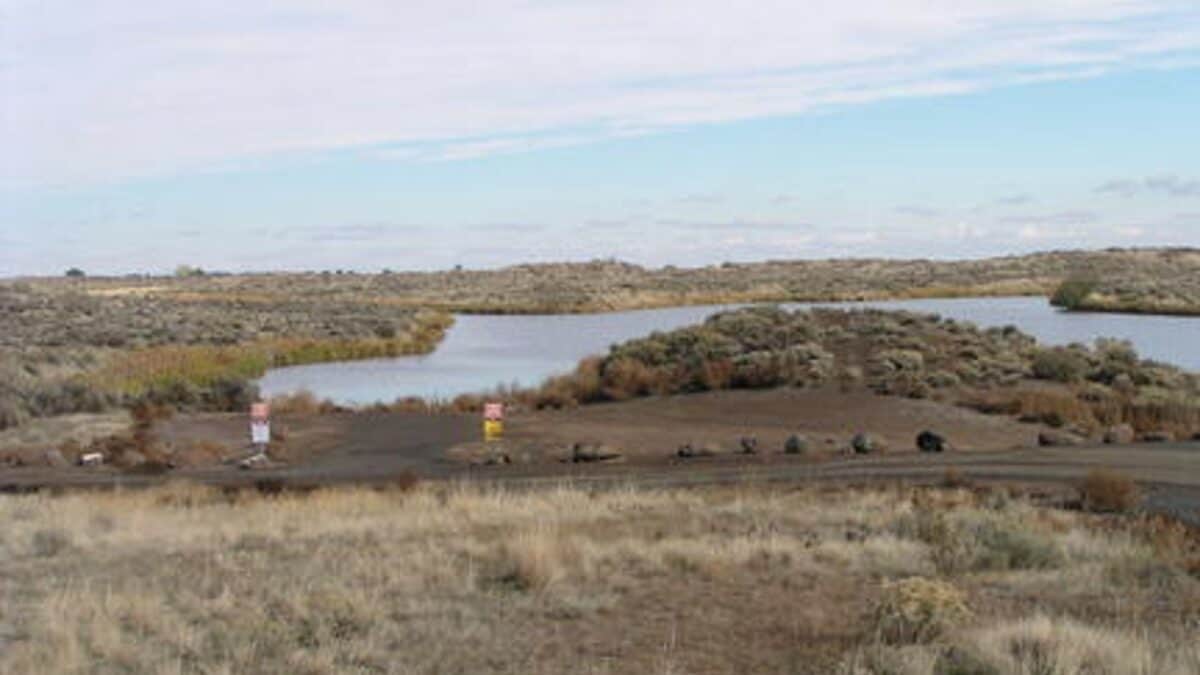
- Map
- Crowds: Moderate
- Water: No
- Restrooms: No
If you’re looking for a dispersed camping area in central Washington, look no further than Caliche Lake. This camping zone is situated less than 5 miles away from the small town of George, right next to Interstate 90.
While it’s certainly not the most desirable dispersed camping area in the state, accessing it is extremely easy due to its proximity to the highway. Furthermore, it easily accommodates various camping styles – here, you’ll be able to park your RV and pitch a tent.
This place is an excellent choice for camping enthusiasts who also love fishing. You’ll be able to catch trout, most of which can be found in the Upper Caliche Lake. The lake fishes well in the early spring (March and April).
As for the surroundings, you’ll be somewhat close to the Columbia River (4 miles away) and the town of George, which you can visit whenever you need to stock up on provisions. Rock climbers will be pleased to know that they’ll be less than 2 miles away from the excellent climbing routes of Frenchman Coulee.
The last thing worth mentioning is that Caliche Lake has no restrooms, showers, or fire pits. You’ll have to be a self-sufficient camper, so bring all the food, water, and gear you need.
Barker Canyon Dispersed Camping
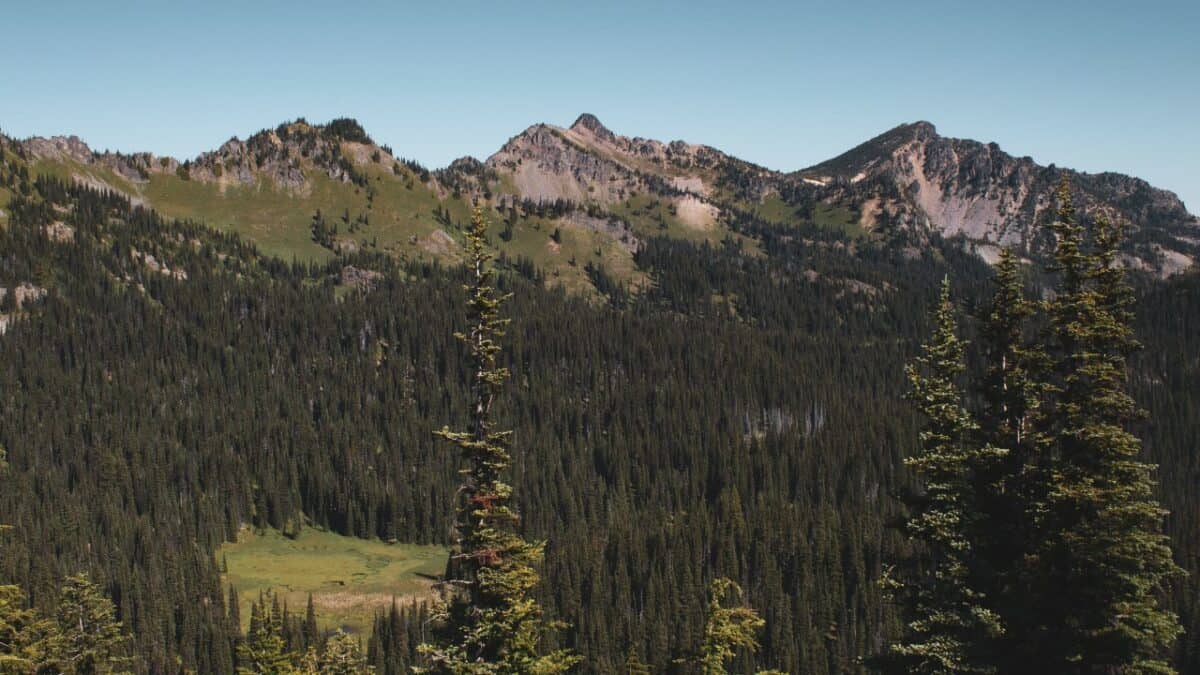
- Map
- Crowds: Moderate
- Water: No
- Restrooms: A pit toilet at the boat ramp
Another well-renowned Washington dispersed camping spot can be found on the shores of Banks Lake. Its name is Barker Canyon, and it’s a place that provides outdoor enthusiasts with truly magnificent views of this state’s wilderness.
The camping spots can be found everywhere around the boat launch, which is located on the lake’s northwestern shore. The area is situated some 8 miles away from the town of Grand Coulee, which you can visit whenever you need provisions.
If you’d rather pitch your tent or park your RV on a developed campground, look no further than just across the lake. There, you’ll find the well-maintained Steamboat Rock State Park, which features an established campsite and several lovely trekking trails.
The only facility you’ll find at Barker Canyon is a pit toilet, which is located next to the boat ramp mentioned above. You’ll be left to your own devices when it comes to everything else, so make sure to bring plenty of food and water.
The best thing about this dispersed camping area is that it’s generally tranquil, despite being moderately crowded during the summer. If you’re looking for a peaceful outdoor refuge in northeastern Washington, Barker Canyon is undoubtedly one of your best options.
Lower Sandy/Baker Lake (Cascade Range)
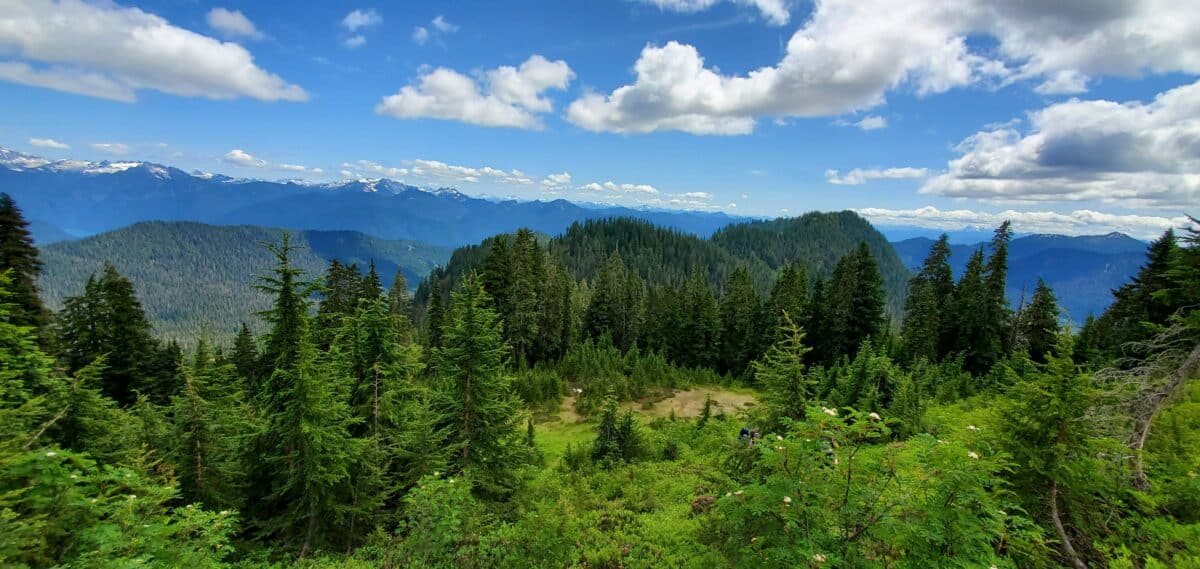
- Map
- Crowds: Moderate
- Water: No
- Restrooms: No
The very last Washington dispersed camping area I’ll be taking a look at is the one on the western shore of Baker Lake. This collection of beautiful camping spots is known as the Lower Sandy Dispersed Sites.
Since it’s situated in the middle of Mount Baker National Park, Lower Sandy is a phenomenal base for exploring this region. The area is dotted with good forest roads – you’ll have no problems finding an ideal spot for your tent or RV.
Baker Lake covers an area of 4,800 acres and is widely considered one of the most picturesque water bodies of this type in the entire state. For stunning views, check out the Baker Lake Trail, which follows the reservoir’s eastern shoreline.
You can also engage in saddle trips, picnicking, fishing, and boating. There are also several established campgrounds here, most of which can be found on the lake’s western side.
Dispersed campers should know that there are no amenities outside the developed campsites. Also, the area is quite popular, and the best spots fill up quickly on summer weekends, so make sure to arrive there early.
The Takeaway
As you can see, Washington has no shortage of gorgeous dispersed campsites – they are in every part of the state. They offer unforgettable sights, smells, and sounds, and most can be accessed quite easily.
However, not all of these places feature amenities such as restrooms or access to drinking water, but that’s not something a true wild camper expects anyway.
Hopefully, this guide has helped you prepare for your Washington outdoor adventure and choose the right dispersed campsite for it. Good luck!

I love hiking, backpacking, and camping. From the Camino de Santiago to the West Highland Way in Scotland or simply a great day hike on the weekend. Hiking refreshes me, my mind, and keeps my body reasonably fit. So far I have walked three Camino routes and many other long distance hikes in the UK, Canada, and around the rest of Europe. One of the best was my hike up Ben Nevis.

